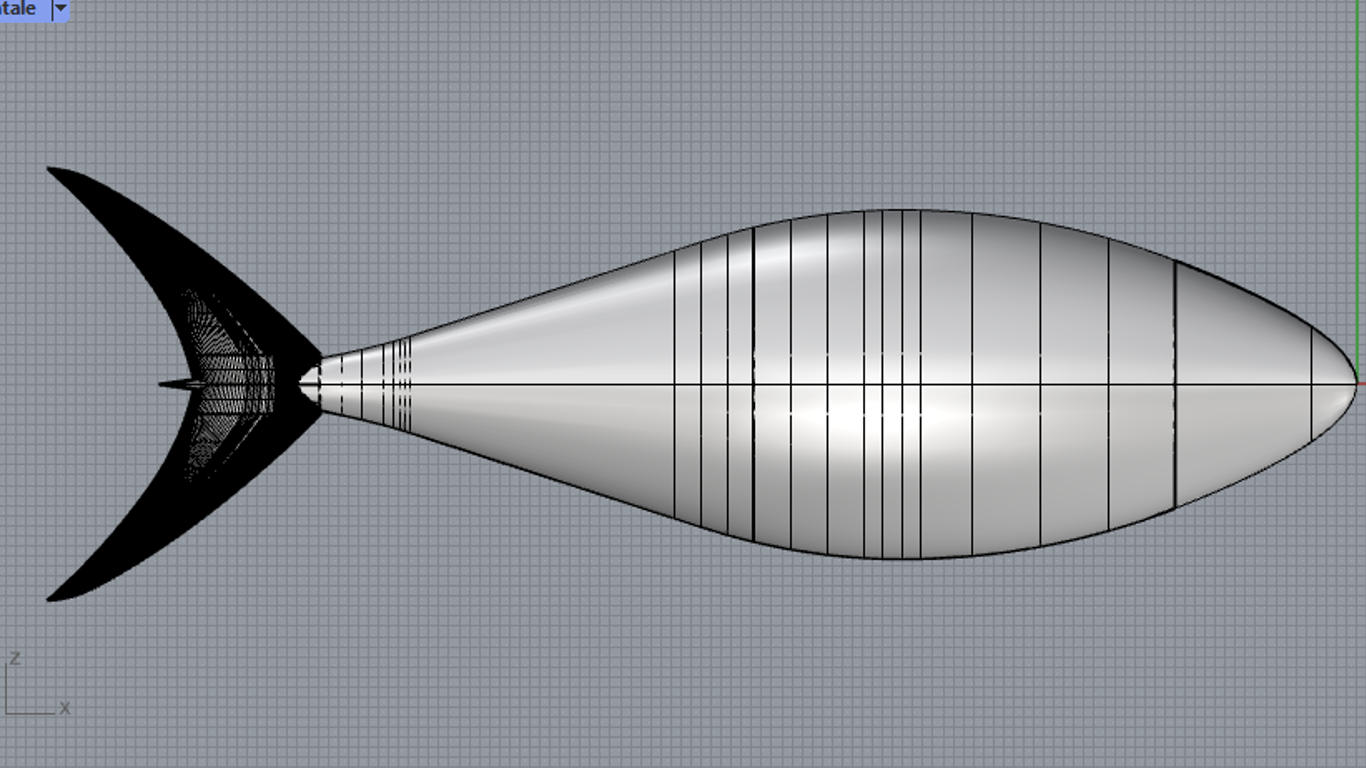Welcome to my first log, I will be coincise and straightforward as I hope to have the time to put more detailed explanations in the details section. But as I mentioned before, this project is more focused on a simple build from where to start a project with a more scientific and scrupulous approach.
As I want to build and efficient robot that mimicks the kinematic of a tuna, I will choose the geometry of a Thunnus thynnus whose plans are well documented in "The design of a flexible hull undersea vehicle propelled by an oscillating foil" (Barrett, 1994). It should be quite hydrodynamic, even though I simplified the geometry by sweeping the elliptical cross sections of costant ratios along parabolic curves.
Once I chose the geometry, I defined the lenghth using the strouhal number formula for caudal propelling fishes. I imposed a Strouahl number of 0.3 for best efficiency, a cruising frequency of 3Hz as it is in many species and a swimming speed of 0.5 m/s. By imposing these numbers and linking the peak to peak foil amplitude to the body length (15% as mentioned in "The Kinematics and Dynamics of Undulatory Motion, Masoomi, 2015), I got an overall length of 650mm.
Consequently, I divided the overall length in head (rigid body, 46%), tail (ondulating part, 33%) and caudal fin (foil, 21%). Those divisions are derived from "Tunabot flex, White, 2021" and other works of George Lauder. The latter has published several anatomical and kinematics studies about Thunnus Albacares.
The foil design is a big topic to discuss later on, but at least I have the lengths of the moving part of the robot and the rigid one.

 Fabio Vezzari
Fabio Vezzari
Discussions
Become a Hackaday.io Member
Create an account to leave a comment. Already have an account? Log In.